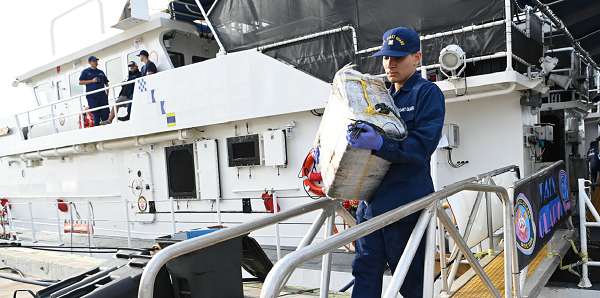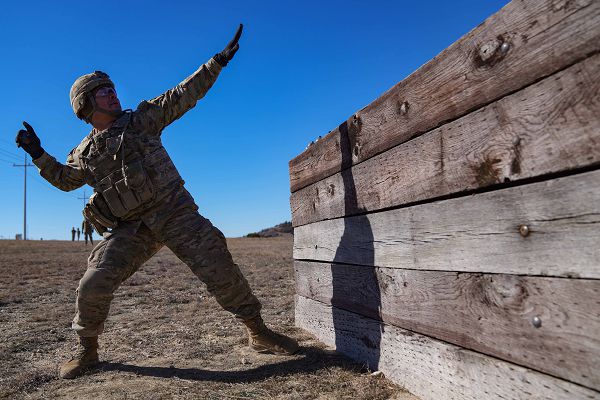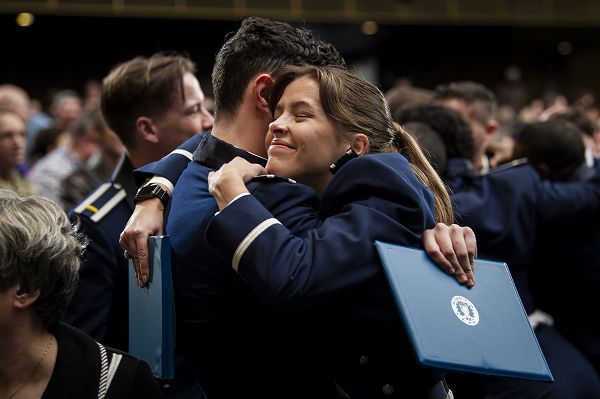- Details
- Hits: 788

Miami, Florida. (January 9, 2024): It is an industry that dumps tons of poison onto our streets that results in violence and mayhem in our neighborhoods. Thanks to the U.S. Coast Guard, a sizable chunk of these deadly narcotics will not make it to American shores. In the photo Petty Officer 2nd Class Diana Sherbs, a crew member of the Coast Guard Cutter Margaret Norvell offloads $32 million in illegal narcotics after a recent seizure in the Caribbean. Six suspected smugglers were detained aboard the Norvell and they will face American justice.
The Caribbean Sea is a world hot spot for drug trafficking and is one of the most dangerous assignments in the Coast Guard. Drug smugglers are almost always heavily armed and desperate to avoid capture making interdictions at sea especially hazardous. Cocaine is the most profitable illicit drug and it accounts for 85 percent of the drug market in the region. Colombia is the origin of over 95 percent of cocaine imports within the region followed by Venezuela which is the source of an additional 29 percent.
- Details
- Hits: 1165

Red Sea. (January 27, 2024): The Iranian back Houthi rebels in Yemen continue to attack peaceful shipping in the Gulf of Aden and the USS Eisenhower Carrier Strike Group is fighting back. In this photo by MC3 Nicholas Rodriguez, an MH-60R Sea Hawk helicopter, attached to the "Swamp Foxes" of Helicopter Maritime Strike Squadron 74, lands on the flight deck of the Eisenhower after a reconnaissance mission. This week, the Carrier group came under direct missile attack which represents an escalation on the part of the Iranian backed group.
The Eisenhower, commissioned in 1977, is the second of ten Nimitz-class aircraft carriers currently in service and is named after the 34th President of the United States. Assisting the Eisenhower are six Navy surface ships including the cruiser USS Philippine Sea and the destroyers Gravely, Mason, Carney, and Laboon. The strike group is coordinating its attacks with the United Kingdom and is supported by maritime assets from Australia, Bahrain, Canada, and the Netherlands.
- Details
- Hits: 1576

Fort Cavazos, Texas. (January 9, 2024): Every recruit undergoing basic combat training can attest to the horror they felt when a drill sergeant first handed them a live grenade. In this photo by Sgt. 1st Class Whitney Hughes, a soldier assumes the proper launch posture to accurately throw a live grenade. Before coming near a live grenade, every Soldier and Marine is taught a highly rigid set of procedures they will use when it is time to toss the real thing.
First, every troop is taught the hand-exchange process receiving a grenade and the proper aiming method. Trainees spend hours tossing practice dummies until each has perfected their launch technique. On the day of the real deal, troops are taken to a special range that has fortified concrete “stalls” placed side-by-side and usually positioned atop a hill so that grenades fall away naturally.
- Details
- Hits: 1059

Colorado Springs, Colorado. (January 21, 2024): “The journey of a thousand miles begins with the first step.” John Kennedy. In this photo by Justin R. Pacheco, newly commissioned 2nd Lieutenant Lexi De Villiers, right, embraces a fellow graduate at the U.S. Air Force Academy’s 2023 Winter Graduation ceremony. The 2023 Class commissioned 806 officers into the Air Force and another ninety-three to the Space Force. Twelve international cadets graduated with their U.S. classmates.
The Air Force Academy is not easy to get into with only 13% of the 11,500 applications accepted each year. Cadets must have a minimum of a 3.78 GPA along with numerous other requirements. The Academy is ranked seventh in the 2024 edition of U.S. News Best Colleges and has a graduation rate of rate of 87 percent.
- Details
- Hits: 1375

Trenton, New Jersey. (January 14, 2024}: In this photo by Specialist Michael Schwenk, 1,500 New Jersey National Guard soldiers gather for a farewell ceremony as they prepare to deploy in support the U.S. Central Command’s Combined Joint Task Force Operation Inherent Resolve. The Combined Task Force advises and assists coalition forces fighting to defeat the Islamic State (ISIS) in Iraq, Syria, and Libya. Operation Inherent Resolve is chiefly an American and British effort along with local allies to defeat ISIS militarily and to free innocent civilians trapped in their self-proclaimed caliphate's territory.
America contributes combat ground troops, mostly special forces, along with regular infantry and artillery units. This is the largest deployment of New Jersey Army National Guard Soldiers since 2008. The Soldiers, from the 44th Infantry Brigade Combat Team, will spend five weeks additional training at Fort Bliss, Texas before deploying overseas.
The 44th Brigade consists of three light infantry battalions, one field artillery battalion, a cavalry squadron, and an engineer unit. Nicknamed the “Jersey Blues,” the 44th dates to the 17th Century with early units of the brigade serving in both the French and Indian and the Revolutionary Wars.
- Details
- Hits: 7708

Undisclosed Location. East Africa. (January 9, 2024): One of the most daring, and dangerous, techniques to insert warfighters into combat is by way of a HALO jump. In this photo by Staff Sergeant Allison Payne, Air Force operators assigned to the 82nd Expeditionary Rescue Squadron and Joint Personnel Recovery Center perform HALO jumps from Marine Corps KC-130J Hercules cargo aircraft. HALO stands for high altitude-low opening military free falls and is a method to deliver people and supplies via parachute insertion. In the HALO technique, the parachutist opens the parachute at a low altitude after free-falling for a lengthy period before pulling the cord. The technique allows pilots to remain at altitude out of range of ground fire or missiles while increasing the stealth and accuracy of insertions.
The chief danger of HALO jumps is the lack of oxygen at high altitude and the risk of passing out from hypoxia (insufficient oxygen). Special Operators jump from altitudes between 30 and 40 thousand feet, and fee fall to as low as eight hundred feet above the ground. Military parachutists have been clocked at up to 126 mph while achieving jump times under two minutes.
The HALO was first developed in the 1960s for military use and the first jump was accomplished by Colonel Joseph Kittinger, a leap from nineteen miles above the world’s surface. The first use of the HALO in combat was during Vietnam where the technique was used by special forces for recon insertions and the tactic continues to be a staple for U.S. Special Operators.


